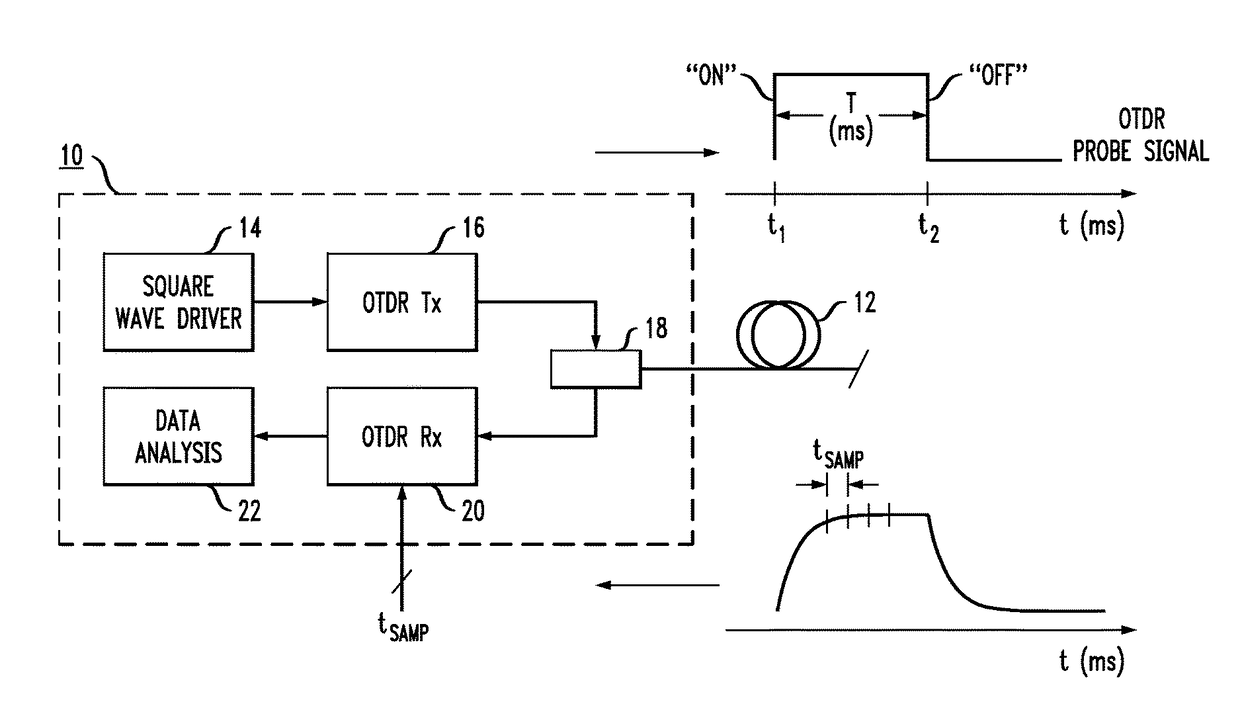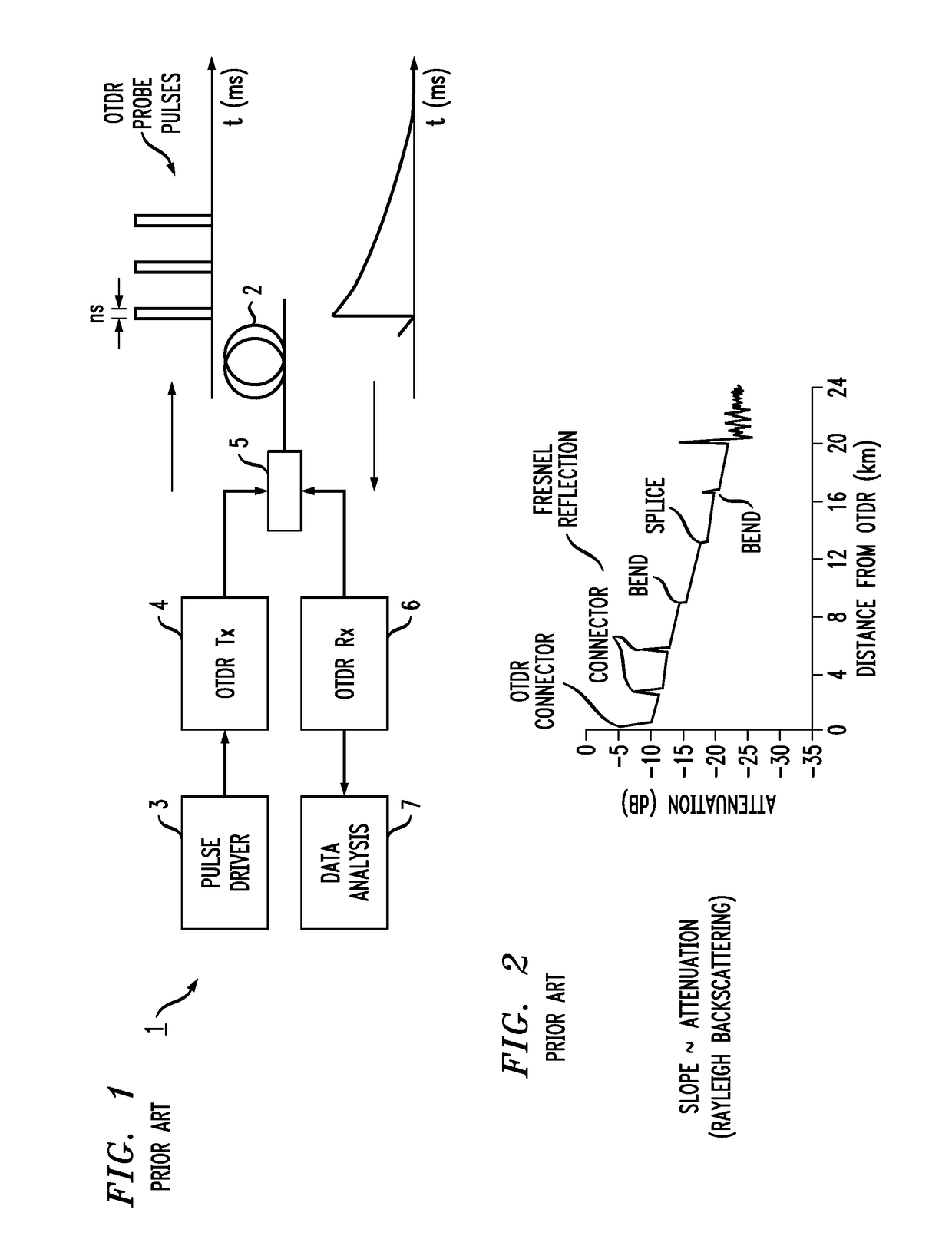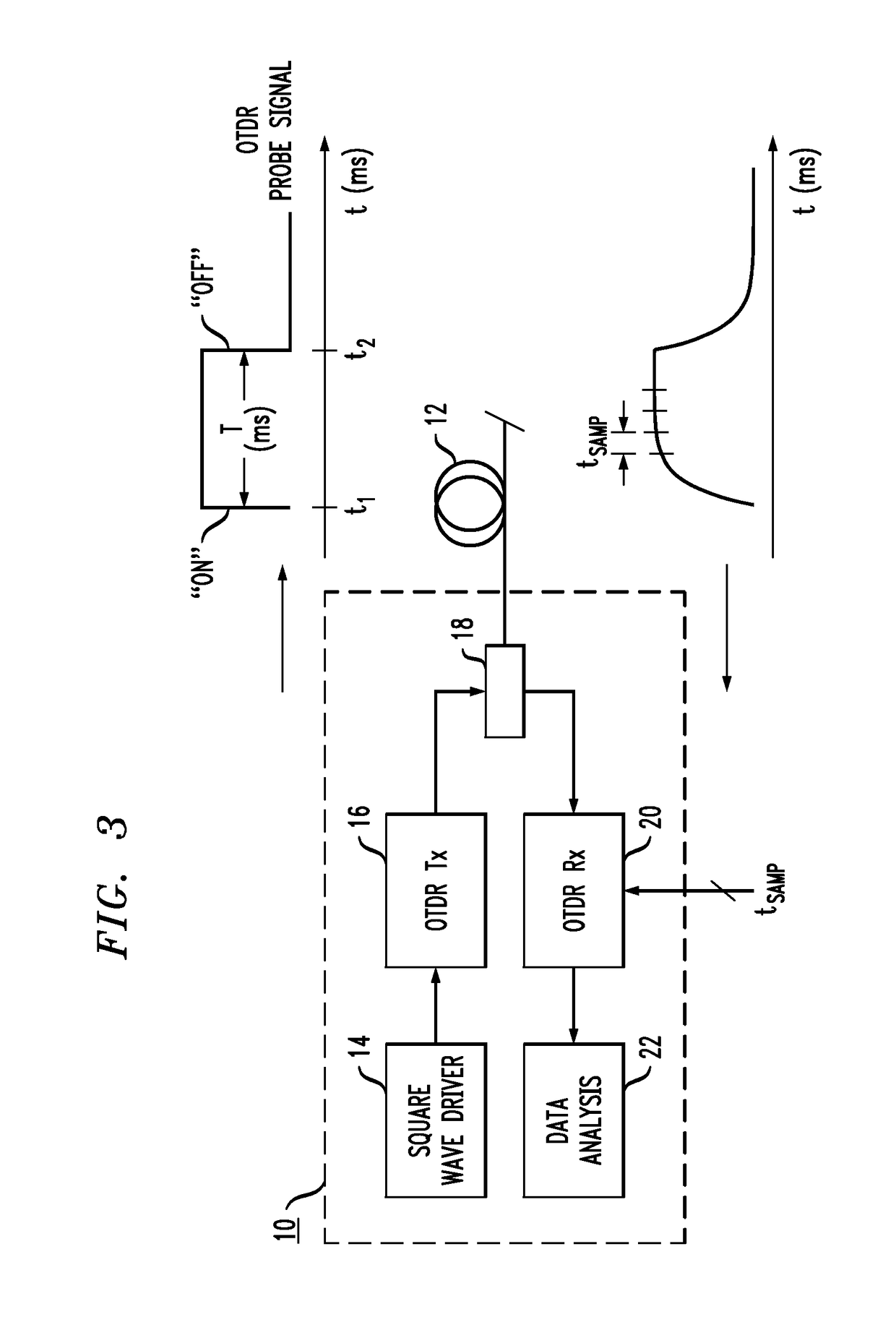Edge propagating optical time domain reflectometer and method of using the same
a time domain reflectometer and edge propagation technology, applied in the field of optical time domain reflectometers, can solve the problems of reducing the strength of the received signal, the fall time of the probe pulse is not infinitely fast, and the system may miss the second event, etc., to achieve smoother trace, improve the resolution, and improve the effect of noise level
- Summary
- Abstract
- Description
- Claims
- Application Information
AI Technical Summary
Benefits of technology
Problems solved by technology
Method used
Image
Examples
Embodiment Construction
[0039]Prior to describing the details of the present invention, a brief description of a conventional, pulsed OTDR system will be provided. With an understanding of the conventional pulsed OTDR system, the details and advantages of the edge-propagating OTDR system of the present invention will be clearly evident.
[0040]FIG. 1 illustrates an exemplary prior art OTDR system 1 being used to characterize an optical fiber span 2. A pulse driver 3 is used to create high-power, relatively short pulses from an OTDR transmitter laser source 4. A graph of the created OTDR probe pulses is also shown in FIG. 1. The created pulses are injected into fiber span 2 via an optical coupler 5. Return light from these probe pulses (comprising both Rayleigh backscattering associated with the fiber composition and Fresnel reflections from abrupt loss events, such as splices) is subsequently directed by coupler 5 into an OTDR receiver component 6. A graph of an exemplary return signal is also shown in FIG. ...
PUM
| Property | Measurement | Unit |
|---|---|---|
| length | aaaaa | aaaaa |
| distance | aaaaa | aaaaa |
| distance | aaaaa | aaaaa |
Abstract
Description
Claims
Application Information
 Login to View More
Login to View More - R&D
- Intellectual Property
- Life Sciences
- Materials
- Tech Scout
- Unparalleled Data Quality
- Higher Quality Content
- 60% Fewer Hallucinations
Browse by: Latest US Patents, China's latest patents, Technical Efficacy Thesaurus, Application Domain, Technology Topic, Popular Technical Reports.
© 2025 PatSnap. All rights reserved.Legal|Privacy policy|Modern Slavery Act Transparency Statement|Sitemap|About US| Contact US: help@patsnap.com



